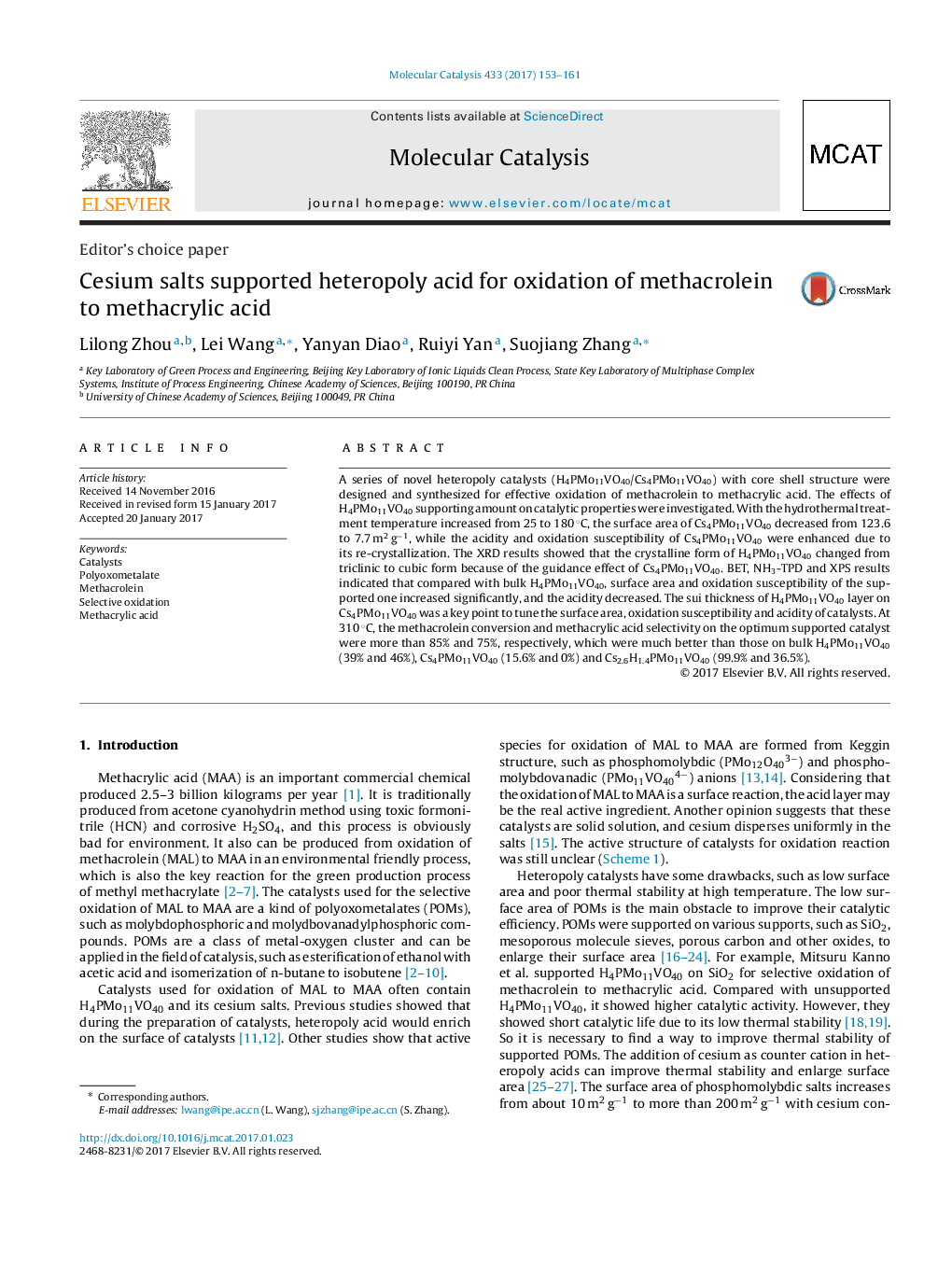| Article ID | Journal | Published Year | Pages | File Type |
|---|---|---|---|---|
| 6448847 | Molecular Catalysis | 2017 | 9 Pages |
â¢Heteropoly catalysts with core-shell structure showed best catalytic performance for oxidation of methacrolein to methacrylic acid.â¢The properties of core-shell structured catalysts can be tuned by changing thermal treatment temperature and time of Cs4PMo11VO40.â¢The byproduct selectivity was mainly controlled by the acidity of catalysts.
A series of novel heteropoly catalysts (H4PMo11VO40/Cs4PMo11VO40) with core shell structure were designed and synthesized for effective oxidation of methacrolein to methacrylic acid. The effects of H4PMo11VO40 supporting amount on catalytic properties were investigated. With the hydrothermal treatment temperature increased from 25 to 180 °C, the surface area of Cs4PMo11VO40 decreased from 123.6 to 7.7 m2 gâ1, while the acidity and oxidation susceptibility of Cs4PMo11VO40 were enhanced due to its re-crystallization. The XRD results showed that the crystalline form of H4PMo11VO40 changed from triclinic to cubic form because of the guidance effect of Cs4PMo11VO40. BET, NH3-TPD and XPS results indicated that compared with bulk H4PMo11VO40, surface area and oxidation susceptibility of the supported one increased significantly, and the acidity decreased. The sui thickness of H4PMo11VO40 layer on Cs4PMo11VO40 was a key point to tune the surface area, oxidation susceptibility and acidity of catalysts. At 310 °C, the methacrolein conversion and methacrylic acid selectivity on the optimum supported catalyst were more than 85% and 75%, respectively, which were much better than those on bulk H4PMo11VO40 (39% and 46%), Cs4PMo11VO40 (15.6% and 0%) and Cs2.6H1.4PMo11VO40 (99.9% and 36.5%).
Graphical abstractDownload full-size image
